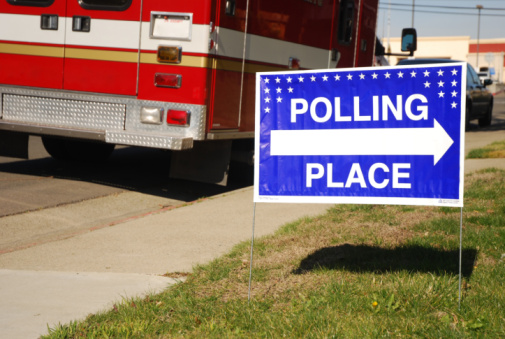
FEC proposes three alternative draft rules for the transparency of multi-state primary expenditures.
Grappling with the proliferation of independent organizations buying into presidential elections, the Federal Election Commission (FEC) recently proposed three competing interpretive rulings that would govern expenditures in primary elections. The decision to select one of the rules, will likely affect the transparency of last-minute advertising by non-candidate committees in 2016.
Unaffiliated Political Action Committees (PACs) have increasingly played important roles in financing campaigns. This category includes the now infamous “super PACs,” as well as party, union, and trade group committees.
These PACS must currently register with the FEC and file regular compliance documents detailing their fundraising and expenditures. When they make significant, independent expenditures close to Election Day, they are currently required to report their spending within 24 or 48 hours. These reports allow the FEC and the public to track last-minute advertisements and campaigning to prevent abuse. Without these reports, PACs could make illegal or inappropriate expenditures days before the election and hide their spending from the public until after voting finishes.
But, during the primary season, when 50 presidential elections are held by each party in a period of six months, how should PACs report expenditures that affect multiple primaries occurring at different times? For each election cycle, PACs must compile their spending on direct communications that are not coordinated with a candidate or party (e.g. targeted Facebook or television ads). The FEC has long-standing triggers that force PACs immediately to report aggregate spending over $10,000 or over $1,000 within 20 days of an election. However, modern PACs often implement nationwide messaging strategies during the primaries through television, radio, or internet ads. When this spending does not specifically reference a particular primary, but only recommends or attacks a candidate generally, how should it be reported?
The FEC’s three very different drafts of a proposed interpretive rule suggest alternative ways the agency might regulate reporting of multi-state expenditures. Draft A repackages the current guidelines established by a 2012 advisory opinion issued by the agency. It would instruct PACs to divide their aggregate expenditures by the number of remaining primaries.
Draft B would ignore individual primaries and treat the presidential primary as a single election that culminates at the nominating convention. It would create a single set of deadlines calibrated to the start of the convention.
Draft C would base date requirements on the next upcoming primary election and require PACs to report nationwide expenditures as if they were particular to that state.
Dividing aggregate expenditures by the number of remaining primaries—the policy outlined in Draft A—could allow PACs to dilute and avoid the reporting requirements. For instance, a PAC that spent $49,999 on Facebook ads before the Iowa caucus would have a per state total of only $999.98. That level of spending would not trigger any special reporting requirements. Furthermore, a divided aggregate total could allow PACs to spend hundreds of thousands of dollars 21 days before the Super Tuesday primaries and avoid triggering the $10,000 threshold completely.
Building a single set of deadlines based on the nominating convention would dramatically simplify the reporting process. Draft B seeks to address the potential for the Draft A approach to result in efforts to mislead the public by presenting a broken-up series of separate expenditures, hiding nationwide expenditures. Draft B would essentially require reporting of aggregate expenditures above $10,000 throughout the season, regardless of the upcoming primary schedule. The 20-day pre-election period requiring reporting of expenditures greater than $1,000 would likely disappear as a practical matter, because nominating conventions are months after the last primary and very little is spent during this time.
Draft C proposes a different alternative. Under this version, PACs would report their undivided nationwide expenditures according to deadlines set by the next upcoming primary election. Thus, if the PAC spends a total of $1,001 within 20 days of any primary, it must report as if all the spending had been on that primary. This proposal would increase the frequency and complexity of reporting requirements.
The FEC maintains that the drafts are clarifications of existing regulations, and therefore they do not trigger heightened notice-and-comment requirements under the Administrative Procedure Act (APA). However, the Commission published all three drafts in January and accepted public comment until February 20th.
The FEC’s ultimate decision will not upend the existing transparency regime. PACs will still be required to submit monthly reports during election years. However, these regular reports are not immediately available to voters; the FEC takes weeks to file and post them. Special reports are rapidly available to interested parties and the media. That difference could be critical in the primary season, when candidates’ momentum varies by the hour. Major expenditures could go unnoticed by the media and the candidates until after a crucial primary in a major state.
The FEC’s decision will likely present the next twist in the agency’s incremental approach to regulating electoral politics. PACs increasingly compete with candidates for attention, often using complex, targeted messaging through a variety of mediums. Federal election regulators are, in many ways, still trying to catch up with this new reality and look for better ways to police elections.



